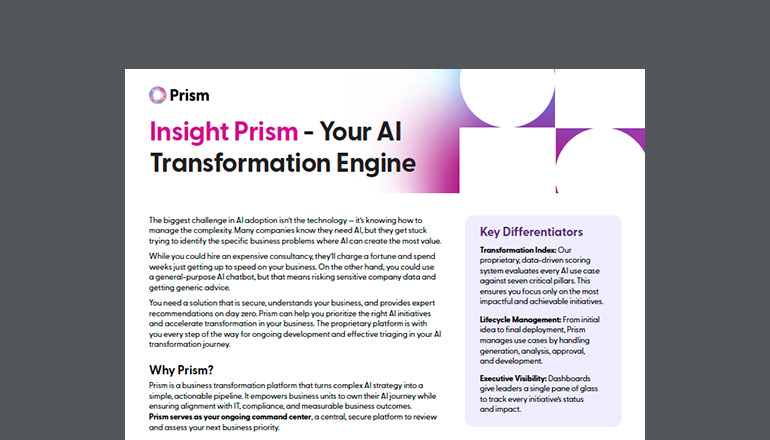Glossary What is BCDR, BC/DR, Business Continuity and Disaster Recovery
By / 2 Jan 2024 / Topics: Backup & recovery Artificial Intelligence (AI) Cloud
Business Continuity and Disaster Recovery (BCDR), sometimes stylized as BC/DR, is a critical aspect of any organization's risk management plan. It ensures that essential business functions can be restored in the event of a disaster or other disruptive event, minimizing the impact on operations and customers.
With the potential for disruptions arising from a multitude of sources, including environmental calamities, technological breaches, or even global health emergencies, it's critical for businesses to deploy a comprehensive BCDR plan. This strategy integrates a broad spectrum of procedures and systems that protect essential operations, data, and infrastructure, ensuring companies are primed for swift and effective action when facing emergencies. This strategic preparation is instrumental in curtailing operational breaks, preserving the integrity of business activities, and upholding a company's image, thereby mitigating economic impacts and reinforcing stakeholder trust regardless of the crisis encountered.
What is a business continuity plan?
A business continuity plan (BCP) is an intricate framework to ensure an organization can maintain essential functions during unexpected disturbances or calamities. Such interruptions may encompass natural calamities such as seismic tremors and typhoons or artificial emergencies, including digital threats or health crises. The fundamental aim of a BCP is to curtail operational interruptions, diminish economic detriment, and protect the company's standing.
A well-crafted BCP includes a detailed roadmap for responding to disruptions, identifying key personnel responsible for various tasks, and outlining communication protocols to keep employees, customers, and stakeholders informed. It also encompasses strategies for data backup, alternate workspace arrangements, and the procurement of essential resources.
What is a disaster recovery plan?
A disaster recovery plan (DRP) is a subset of the broader BCDR framework that focuses on recovering IT systems and data following a disaster or significant disruption. In contrast, a BCP addresses the continuity of business operations. A DRP, on the other hand, hones in on the critical task of recovering digital assets and ensuring minimal data loss.
A DRP typically includes processes for data backup, system redundancy, and recovery procedures. It delineates the procedures to be followed when confronting incidents like a data compromise, equipment malfunction, or other technology-centric emergencies. The purpose of such a disaster recovery plan (DRP) is to rapidly reinstate information technology services, curtailing the period of inactivity and lessening the disruption to an organization’s activities.
Why is BCDR important?

1.BCDR ensures business resilience
In an increasingly volatile world, organizations face many risks, ranging from natural disasters to cyber threats. Without a robust BCDR strategy, these risks can lead to severe disruptions and even business failure. BCDR plans to ensure that businesses can weather these storms, adapt to changing circumstances, and continue to serve their customers.
2. BCDR minimizes financial losses
Downtime resulting from disruptions can lead to substantial financial losses. The costs associated with halted operations, lost revenue, and recovery efforts can be staggering. BCDR strategies help minimize these financial losses by enabling rapid response and recovery, reducing the overall impact on the bottom line.
3. BCDR safeguards reputation
The esteem in which a business is held stands as one of its most critical resources. Inadequate crisis management or disruption in operations can lead to declining confidence and reliability among clients, collaborators, and shareholders. BCDR plans include communication strategies to ensure transparent and timely updates, helping protect an organization's reputation during challenging times.
4. BCDR helps you meet regulatory compliance requirements
Many industries and regions have specific regulatory requirements concerning data protection, privacy, and business continuity. Implementing BCDR plans not only helps organizations meet these compliance standards but also demonstrates a commitment to responsible business practices.
5. BCDR enhances customer confidence
Customers expect reliability from the businesses they interact with. By having BCDR plans in place, organizations can assure their customers that they are prepared to handle disruptions and maintain consistent service quality, which enhances customer confidence and loyalty.
Because of its complex nature and critical importance, many organizations partner with a business that has experience building a sophisticated BCDR program.
An experienced IT consulting team can help with:
- Working with business executives to determine the business relevance of IT services
- Proven, agile techniques for capturing accurate business requirements
- Skill in the use of automated tools for application dependency mapping
- Practical experience in how the various recovery options work
- Ability to support solution implementation
- Assistance with testing and continuous improvement
- Proven ability to help develop practical plans and supporting documentation
4 key differences between business continuity and disaster recovery

In the realm of safeguarding an organization's operational integrity and resilience, two essential concepts often come to the forefront: business continuity (BC) and disaster recovery (DR). Though often conflated, these concepts embody different strategies for handling interruptions and securing an organization's resilience in the face of challenges. Let’s delve into the four primary distinctions between business continuity and disaster recovery and shed light on their individual roles in fortifying an organization's readiness:
1. Incorporation into comprehensive plans
One significant difference between business continuity and disaster recovery is their scope within an organization's preparedness framework. Business continuity often encompasses a broader strategy that includes disaster recovery as a subset. In other words, some businesses may incorporate disaster recovery strategies as part of their overall business continuity plans. While both are crucial, disaster recovery mainly focuses on IT systems and data, while business continuity takes a more holistic approach, addressing all aspects of business operations.
2. Goals and objectives
Business continuity and disaster recovery have different overarching goals. Business continuity aims to maintain the essential functions of an organization during and after a disruption, ensuring the continuation of critical processes and services. On the other hand, disaster recovery is primarily concerned with minimizing the downtime and data loss resulting from an IT-related disaster or failure. While their objectives may overlap to some extent, their ultimate purposes differ.
3. Focus during disasters
During a disaster or crisis event, the focus of business continuity and disaster recovery diverges. Business continuity primarily concentrates on keeping the business operational, ensuring that key processes and services continue to function. This may involve implementing alternate workspaces, ensuring employee safety, and maintaining communication with stakeholders. Disaster recovery, on the other hand, zeroes in on restoring IT systems and data as swiftly as possible to minimize the impact on operations.
4. Communication methods
Effective communication is a critical aspect of both business continuity and disaster recovery plans. However, business continuity strategies typically include detailed communication plans that encompass various stakeholders. These strategies guarantee that during a crisis, a flow of information is maintained to employees, clients, vendors, and the general public. Conversely, disaster recovery plans tend to zero in on communications concerning IT infrastructure and data restoration, engaging mainly IT staff and stakeholders who are directly impacted by technological setbacks.
What's the difference between organizational resilience and operational resilience?
As modern enterprises navigate a terrain rife with unpredictability and various risks, the principles of organizational resilience (OR) and operational resilience (OpR) have risen in prominence. At a cursory look, these terms could be mistaken for one another, yet they articulate separate, albeit interlinked, elements of a company's endurance and recuperative prowess amidst challenges.

Organizational resilience (OR)
Organizational resilience (OR) represents a broad and all-encompassing notion that captures a company's capacity to adjust, survive, and prosper amidst diverse interruptions, difficulties, and unpredictable scenarios. It embodies a wide-ranging strategy that surpasses the boundaries of individual operational roles or divisions. OR addresses an organization's capacity to not only survive but also evolve and grow stronger through adversity.
Key aspects of organizational resilience (OR):
- Strategic agility: OR involves the strategic agility to anticipate, prepare for, and respond to a wide range of disruptions, whether they are economic, technological, environmental, or regulatory in nature.
- Cultural resilience: OR encompasses fostering a culture of resilience throughout the organization, where adaptability, innovation, and continuous improvement are valued and embedded in the organizational DNA.
- Stakeholder engagement: OR recognizes the importance of engaging with various stakeholders, including employees, customers, suppliers, and regulators, to build trust and maintain relationships during turbulent times.
- Governance and risk management: Effective governance structures and robust risk management practices are essential components of OR, ensuring that the organization can identify, assess, and mitigate risks effectively.

Operational Resilience (OpR)
Conversely, operational resilience (OpR) is a component within the broader scope of organizational resilience, concentrating expressly on a company's capability to maintain the uninterrupted execution of its essential services and operations despite disturbances. OpR zeroes in on the everyday workings and essential activities that keep an organization's pivotal processes afloat.
Key aspects of operational resilience (OpR):
- Critical services and functions: OpR identifies and prioritizes critical business services and functions that must be maintained even in the midst of disruptions. These are the core activities that keep the organization running.
- Recovery strategies: OpR involves developing strategies and plans to recover these critical services quickly and efficiently in the event of disruptions. This includes contingency planning, redundancy, and fallback mechanisms.
- Technology and data resilience: OpR heavily relies on technology and data resilience to ensure that IT systems, data, and infrastructure can recover rapidly after IT-related disruptions.
- Testing and simulation: Regular testing and simulation exercises are essential components of OpR to ensure that recovery plans are effective and can be executed seamlessly.
While organizational resilience (OR) and operational resilience (OpR) may have distinct focuses, they are inherently interconnected. OR provides the overarching framework within which OpR operates. An organization with a strong OR foundation is better equipped to foster OpR, as it encompasses the broader culture, governance, and strategic capabilities needed to ensure operational resilience.
The role of risk analysis, BIA, and BCDR strategies
The role of risk analysis, BIA, and BCDR strategies

Risk analysis
Risk analysis is the foundational step in the BCDR process. It involves identifying and assessing potential risks that could disrupt business operations. Such hazards encompass a wide array, including environmental catastrophes, digital security breaches, supply chain interruptions, and shifts in regulatory landscapes. By undertaking thorough risk assessments, organizations can obtain a lucid insight into their weak spots and the possible repercussions of assorted risks.
Business impact analysis (BIA)
Once risks are identified, a business impact analysis (BIA) is conducted. BIA evaluates the criticality of different business processes and functions. It helps organizations prioritize which operations are most essential and must be restored quickly in the event of a disruption. BIA quantifies the financial, operational, and reputational impact of downtime, guiding decision-making during recovery efforts.
BCDR strategies
Armed with the insights from risk analysis and BIA, organizations can develop tailored BCDR strategies. These strategies encompass a range of measures, including data backup and recovery plans, alternate workspace arrangements, and communication protocols. BCDR strategies are designed to ensure the continuation of critical operations and minimize downtime in the face of disruptions, safeguarding an organization's financial health and reputation.
How to build a BCDR plan

Building a robust BCDR plan involves several key steps:
Risk assessment: Begin by identifying and evaluating potential risks and threats to your organization. This forms the foundation of your plan.
Business impact analysis: Prioritize critical business functions and services that need to be restored quickly. Determine the acceptable downtime for each operation.
Strategy development: Develop detailed strategies for data backup, recovery, and restoration of critical functions. Include communication plans to keep stakeholders informed.
Plan documentation: Document your BCDR plan comprehensively. Ensure that it is accessible to key personnel and regularly updated to reflect changes in risks and operations.
Testing and training: Regularly test your BCDR plan through simulations and drills. Train employees on their roles during a disaster.
Continuous improvement: Continuously assess and refine your plan based on lessons learned from tests and real-world incidents.
BCDR testing
Testing is a crucial element of BCDR planning. Regular testing and simulation exercises help ensure that your plan is effective and can be executed seamlessly during a crisis. It allows you to identify weaknesses, refine processes, and familiarize employees with their roles. Testing should include scenarios for various types of disruptions to ensure comprehensive preparedness.
BCDR cost management
Managing the costs associated with BCDR is essential. While investing in resilience is necessary, organizations should balance cost-effectiveness with preparedness. This involves prioritizing critical functions, optimizing resources, and periodically reviewing expenses to ensure they align with the organization's risk tolerance and budget constraints.
Business continuity and disaster recovery plan templates
To simplify the BCDR planning process, organizations can leverage pre-made templates and frameworks. These templates provide a structured framework for creating a BCDR plan, helping organizations save time and ensure completeness. Tailor the templates to your organization's specific needs, ensuring that they address your unique risks and operational requirements.
BCDR software
BCDR software solutions are invaluable tools for streamlining the planning and execution of BCDR strategies. These tools often include features for risk assessment, BIA, plan development, testing, and automation of recovery processes. BCDR software helps organizations efficiently manage their preparedness efforts and respond promptly to disruptions.
Goals of BCDR planning
Business continuity and disaster recovery (BCDR) planning is a proactive approach that organizations take to ensure their operational resilience in the face of disruptions and unforeseen events. These plans are essential for maintaining business continuity and minimizing downtime. In this article, we'll explore the key goals of BCDR planning, from assessing the state of the business to identifying disaster recovery teams.
Assess the state of business
Goal: Understand vulnerabilities and dependencies
The first goal of BCDR planning is to assess the current state of the business comprehensively. This involves gaining a clear understanding of the organization's operations, processes, assets, and dependencies. By conducting a thorough assessment, organizations can identify vulnerabilities, potential points of failure, and critical components that need protection.
Actions taken:
- Inventory all business processes and functions.
- Document critical dependencies, including technology, suppliers, and key personnel.
- Identify and prioritize critical data and applications.
Find weaknesses and provide solutions
Goal: Identify areas for improvement
Once the state of the business is assessed, the next goal is to find weaknesses and vulnerabilities in the existing systems and processes. These weaknesses can range from outdated technology to inadequate backup solutions. The objective is to pinpoint areas that need improvement and provide solutions to address these shortcomings.
Actions taken:
- Conduct risk assessments to identify potential threats.
- Analyze gaps in existing business continuity and disaster recovery plans.
- Develop strategies and solutions to mitigate identified weaknesses.
Review and test the plan
Goal: Ensure effectiveness
A well-documented plan is of little value if it hasn't been reviewed and tested. The third goal of BCDR planning is to rigorously review the plan to ensure it aligns with the organization's goals and objectives. Testing the plan through simulations and drills is crucial to validate its effectiveness and identify areas that require adjustments.
Actions taken:
- Regularly review and update the BCDR plan to reflect changes in the organization.
- Conduct drills and exercises to assess the plan's functionality and the team's preparedness.
- Evaluate the plan's response to various disaster scenarios and refine it accordingly.
Identify location for data storage
Goal: Secure data and information
Data is a critical asset for most organizations, and securing it is a paramount goal of BCDR planning. This involves identifying appropriate locations for data storage and ensuring that data is protected against various threats, including cyberattacks, physical damage, and data loss.
Actions taken:
- Determine the optimal data storage solutions, including on-site and off-site options.
- Implement robust data backup and recovery strategies.
- Establish data encryption and access control measures to protect sensitive information.
Know the disaster recovery teams
Goal: Ensure a coordinated response
A BCDR plan is only as effective as the teams responsible for executing it. Identifying and training disaster recovery teams is a crucial goal. These teams should be well-prepared to respond promptly and efficiently to disruptions, ensuring the organization's resilience.
Actions taken:
- Appoint individuals with clear roles and responsibilities within disaster recovery teams.
- Provide training and ongoing education to team members.
- Establish communication protocols to ensure seamless coordination during a crisis.
Proactive business continuity and disaster recovery planning with Insight

Plan ahead with Insight to establish a robust business continuity and disaster recovery strategy. Our experts are dedicated to crafting cost-effective solutions tailored to protect critical assets and ensure uninterrupted business operations across diverse industries.
Recognizing the unique regulatory landscapes in various industries and understanding that each business has its own strengths, challenges, and opportunities, your Insight team initiates every engagement by getting a complete understanding of your specific business objectives. We then collaborate with you to devise a customized strategy that aligns seamlessly with your needs. Schedule a consultation with our experts today to start planning your organization's disaster recovery and business continuity strategy.




